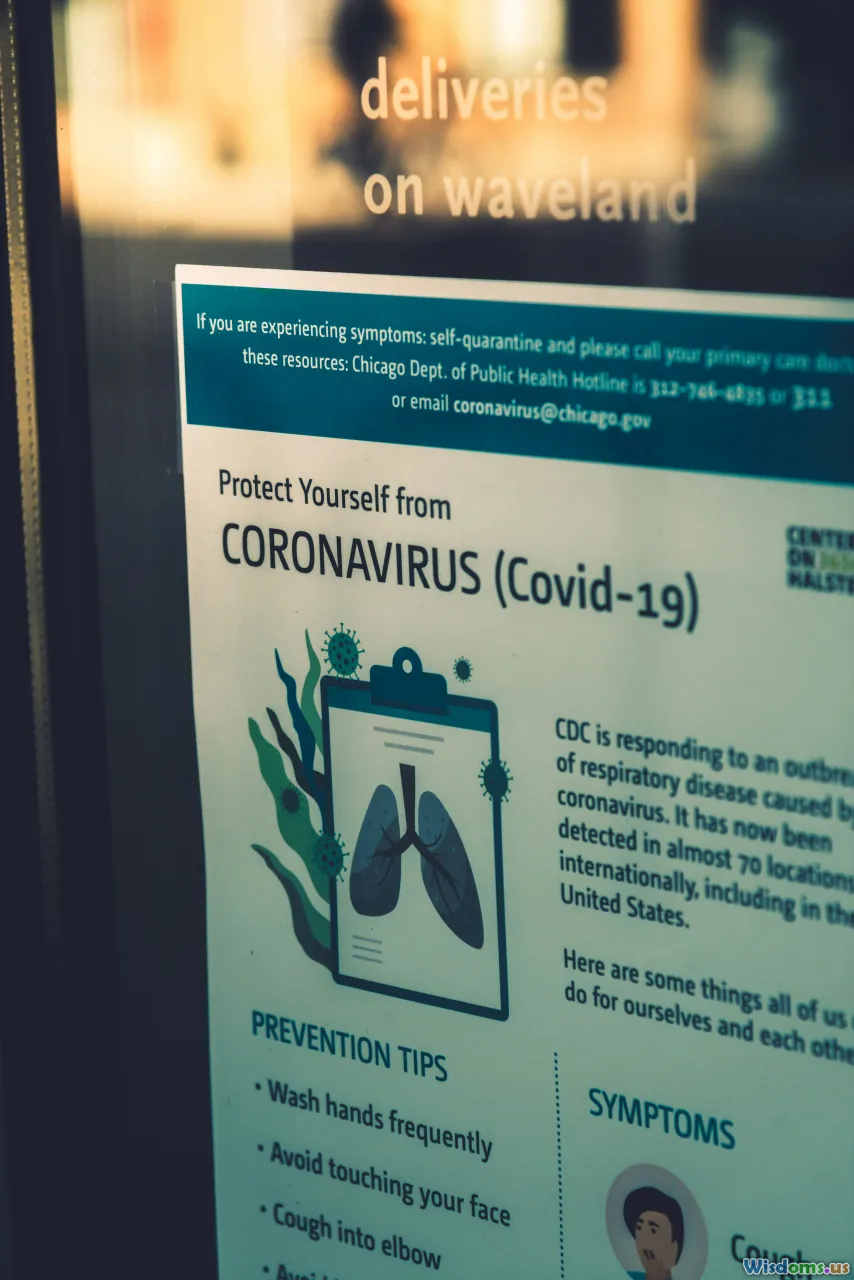
Why Do Ransomware Attacks Keep Targeting Hospitals Now
16 min read Explore why hospitals are prime targets for ransomware attacks and the impact on healthcare delivery. (0 Reviews)
Why Do Ransomware Attacks Keep Targeting Hospitals Now?
As the sun sets on yet another hectic day in a hospital, the last thing patients and staff should worry about is a computer screen blinking with the chilling message: "Your files are encrypted. Pay up if you want them back." Unfortunately, this nightmare scenario is becoming all too common in healthcare around the globe. Ransomware attacks on hospitals are rising at an alarming rate, presenting a new type of emergency—one that's digital, stealthy, and extremely disruptive. But why do ransomware attackers fixate on hospitals? Let’s peel back the layers of this modern quandary.
The Perfect Targets: Why Hospitals Attract Ransomware

On the surface, hospitals may not seem obvious financial jackpots for cybercriminals, but digging deeper reveals why they are prime targets:
-
Critical, uninterrupted operations: Hospitals must provide continuous, often life-saving care. Any downtime due to lost access to patient records or systems can have truly dire consequences. For instance, during the 2021 ransomware attack on Ireland’s Health Service Executive, hospitals across the country reverted to pen and paper; cancer treatments and X-rays were delayed, and chaos reigned.
-
Sensitive health data: Medical records contain a gold mine of personal, financial, and insurance-related information. Unlike credit card data, this information often can’t be easily changed if stolen or leaked, increasing the value of such data on the dark web.
-
Underfunded cybersecurity: Budget constraints frequently force hospitals to prioritize patient care or medical equipment over robust IT infrastructure. A 2022 survey from the Ponemon Institute found that 67% of healthcare organizations in the U.S. cited insufficient budgets for cybersecurity.
Attackers are well aware: while a corporate victim might weather a hack for days, hospitals face immediate, high-pressure imperatives to pay up and restore services.
A Growing Storm: Escalation of Ransomware Incidents in Healthcare

In just the past decade, ransomware attacks on healthcare institutions have escalated both in frequency and impact:
-
Proliferation of major incidents: In 2023, over 300 hospitals in the United States alone were hit by ransomware. The infamous attack on Universal Health Services in 2020 forced manual patient record-keeping across 400 facilities.
-
Sophisticated extortion tactics: Earlier methods just locked up files, but modern ransomware often extracts a copy of sensitive data first, threatening public leaks if ransoms don’t get paid. The 2021 Conti attack on Ireland’s healthcare system, for example, involved dual extortion—both data encryption and threats of data exposure.
-
Ripple effects: Even smaller clinics, diagnostic labs, and specialty practices aren’t safe. In 2022, a ransomware attack temporarily shut down CommonSpirit Health, affecting 140 hospitals in 21 states and delaying support for millions of patients.
Vulnerabilities: Healthcare’s Unique Cyber Weak Spots

Why is the hospital environment so vulnerable?
-
A mix of legacy systems and devices: Hospitals often rely on outdated computers, medical devices, and software that are no longer supported with security updates. MRI machines, infusion pumps, and billing systems can run obsolete operating systems like Windows XP, prime targets for hackers exploiting age-old vulnerabilities.
-
Interconnected networks: The “Internet of Medical Things” links together everything from patient monitors to medication dispensers. While connectivity improves care coordination, it also creates a sprawling attack surface, offering intruders multiple pathways to enter and escalate privileges.
-
Undertrained staff: Medical and administrative employees are frequently targeted by phishing emails masquerading as appointment reminders or lab results. A single click on a malicious link—especially prevalent during stressful shifts—can grant attackers a foothold.
As one chilling example, the 2022 ransomware incident at a small orthopedic hospital originated from a single compromised staff inbox. It swiftly moved laterally and spread throughout the network, locking clinicians out of electronic health records for days.
Anatomy of a Hospital Ransomware Attack

Understanding the anatomy and mechanics of a typical ransomware attack reveals how threat actors consistently succeed:
-
Initial compromise
Most attacks start with either phishing (malicious emails with infected attachments/links) or exploiting vulnerability in unpatched systems. -
Reconnaissance and privilege escalation
Once inside, attackers spend days or weeks exploring systems, mapping the network, and gaining higher-level access. This step maximizes the impact. -
Detonation and encryption
At a carefully chosen moment, ransomware is triggered network-wide, encrypting vital files, disabling backups, and often displaying a ransom demand which, in some examples, can reach millions of dollars. -
Exfiltration and double extortion
Increasingly, sensitive data is exfiltrated as a pressure tactic. Attackers threaten both permanent data loss and public exposure of private medical information.
Consider the 2020 ransomware attack on Düsseldorf University Hospital in Germany—the hackers’ actions tragically led to care delays, contributing to a patient’s death en route to another facility. The incident marked the first known fatality linked to ransomware.
Ransomware Tactics: Evolution and Adaptation

Today’s ransomware gangs run like well-oiled enterprises:
-
Ransomware-as-a-Service (RaaS): Cybercriminal developers now license malware tools to affiliates for a share of the profits. For example, Hive, a major ransomware group, allowed other criminals to launch attacks using its software, broadening the pool of attackers.
-
Targeted attacks and reconnaissance: Rather than bombarding vast numbers of random targets, attackers conduct in-depth research to tailor their strategy—sometimes even manipulating hospital schedules to ensure maximum devastation during peak times.
-
Social engineering: Fake emails crafted to look like urgent hospital notifications, delivery confirmations, or software updates abound, making it hard for staff to spot fakes under daily workload pressure.
-
Dark web leak sites: After attacks, a growing number of gangs post stolen medical data on dark web portals to shame victims and pressure them into paying. This has devastating privacy implications for hundreds of thousands of patients.
The Human Cost: Beyond Financial Loss

While headlines focus on million-dollar ransoms and interrupted operations, the real-world human impact is severe:
-
Interrupted emergency care: During the 2021 Scripps Health ransomware attack in California, trauma patients were transferred to other hospitals as electronic systems went dark. Life-saving surgeries were canceled, and ambulances were diverted.
-
Delayed diagnoses and treatments: With clinical records, lab results, and imaging all encrypted, clinicians can be forced back to paper documentation—if they can access any information at all.
-
Erosion of patient trust: Awareness that hackers may possess sensitive health records undermines confidence in healthcare providers. In some cases, patients’ personal or insurance details end up for sale online, potentially fueling blackmail and identity theft schemes.
-
Exhaustion and moral injury among staff: Health workers, already struggling with daily demands, face additional stress and emotional fallout from disrupted ability to care for patients safely and efficiently.
Why Hospitals Struggle to Defend Themselves

Several systemic challenges limit hospitals’ cybersecurity resilience:
-
Resource limitations: While banks and tech companies often invest millions in digital security, hospitals operate with tight margins, and the cost of up-to-date cybersecurity can feel prohibitive. A median healthcare IT budget might allocate less than 4% to cybersecurity.
-
Complexity and fragmentation: Hospital IT teams often manage a patchwork of old and new technology. One wing may rely on legacy hardware, while another has newer cloud-based applications.
-
Regulatory focus: US regulations like HIPAA prioritize protecting patient privacy but don’t always provide concrete standards for defending against sophisticated ransomware. Deadlines for patching and upgrading are sometimes missed due to requirements not aligning with organizational realties.
-
Vendor reliance: Many hospitals depend on external service providers for IT management. If a third-party billing or imaging provider is compromised—like the 2023 attack on Managed Care of North America affecting dental clinics nationwide—the hospital often lacks control or visibility until it’s too late.
Actionable Steps: Strengthening Defenses Against Ransomware

Luckily, there are practical ways hospitals—and their staff—can harden defenses:
-
Employee training: Start with robust, ongoing education in phishing awareness and social engineering tactics. Simulated phishing drills help reinforce what to look for, especially in stressful clinical environments.
-
Network segmentation: Break hospital IT environments into isolated segments (e.g., separating diagnostic machines from office email systems). This limits the spread of attacks.
-
Regular software updates: Ensuring both general and medical device software are patched—on a strict schedule—can shut down many attack vectors.
-
Backups and disaster recovery: Frequent, off-site backups that are disconnected (air-gapped) from the main network help ensure data restoration can proceed even if attackers lock up primary servers.
-
Incident response planning: Hospitals must have pre-planned, regularly-rehearsed protocols for ransomware scenarios—including ways to communicate, maintain critical services, and liaise with law enforcement.
-
Vendor assessment: Rigorously audit third-party vendors, ensuring they maintain strong security controls and have response plans.
Some healthcare networks are setting up dedicated cybersecurity teams. For example, Mayo Clinic created a specialized task force to run threat intelligence, breach drills, and implement AI-driven anomaly detection systems.
The Way Forward: Collaboration and Resilience

Hospitals can’t face ransomware alone. Partnership is the way forward:
-
Public-private collaboration: Organizations like the US Cybersecurity and Infrastructure Security Agency (CISA) and Health-ISAC share threat intelligence and best practices among healthcare organizations, making it harder for attackers to exploit the same technique multiple times.
-
International cooperation: The cross-border nature of cybercrime means swift collaboration can help identify, deter, and apprehend ransomware groups that hide in jurisdictions thousands of miles from their victims.
-
Government funding and support: Recent bills in the US and Europe have begun to allocate grants to hospitals for upgrading outdated cyber defenses. The Biden administration earmarked over $50 million in 2022 for hardening IT at rural hospitals.
-
Regulatory evolution: Experts advocate for new, cybersecurity-specific standards for health IT, including required minimum levels of investment, vulnerability reporting, and tighter oversight of medical device manufacturers.
A proactive, unified approach strengthens everyone in the chain. When a clinic, hospital, or lab falls victim, ripple effects can reverberate through entire communities and health systems.
Ransomware isn’t merely a technical challenge for hospitals—it’s a threat to public trust, patient safety, and societal well-being. As these digital assaults continue to evolve, so too must healthcare’s strategies for preparation, defense, and resiliency. Much like medicine itself, combating ransomware requires vigilance, adaptation, and cooperation on a scale we’ve never seen before.
Rate the Post
User Reviews
Popular Posts




















